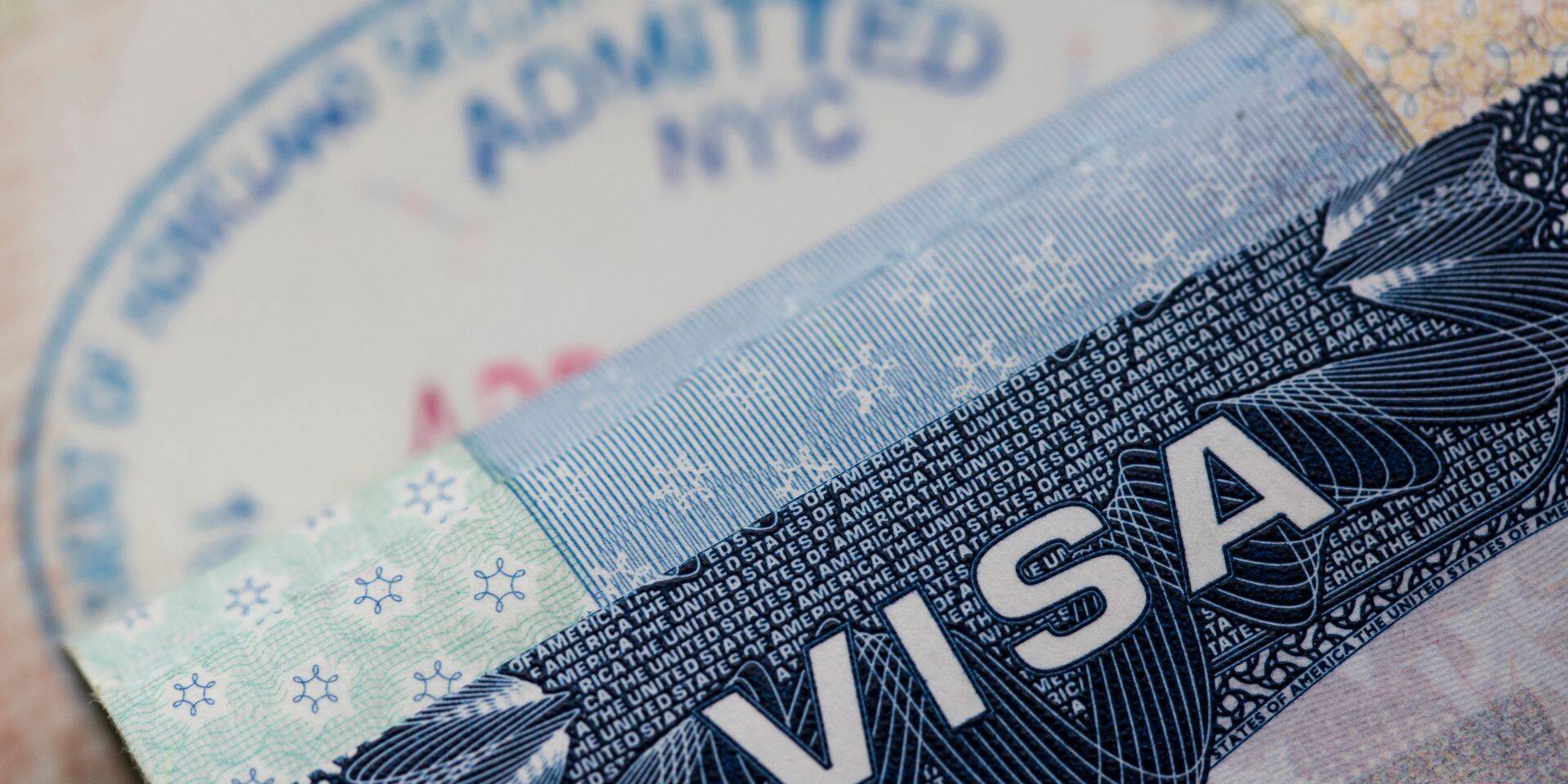On August 23, the US Department of Homeland Security (DHS) published an Advance Notice of Proposed Rulemaking (ANPRM) regarding the DHS’s renewed attempts to clarify the rules of the “public charge” ground of inadmissibility in immigration. The ANPRM details the background of the public charge ground and the DHS’s request for public comment on several specific topics.
The new ANPRM begins with the following summary statement:
“DHS is publishing this advance notice of proposed rulemaking (ANPRM) to seek broad public feedback on the public charge ground of inadmissibility that will inform its development of a future regulatory proposal. DHS intends to propose a rule that will be fully consistent with law; that will reflect empirical evidence to the extent relevant and available; that will be clear, fair, and comprehensible for officers as well as for noncitizens and their families; that will lead to fair and consistent adjudications and thus avoid unequal treatment of the similarly situated; and that will not otherwise unduly impose barriers on noncitizens seeking admission to or adjustment of status in the United States. DHS also intends to ensure that its regulatory proposal does not cause undue fear among immigrant communities or present other obstacles to immigrants and their families accessing public services available to them, particularly in light of the COVID-19 pandemic and the resulting long-term public health and economic impacts in the United States. DHS welcomes input from individuals, organizations, government entities and agencies, and all other interested members of the public.”
Those who wish to comment may do so until October 22, 2021, in the format detailed in the ANPRM. DHS will also hold two virtual public listening sessions on September 14 and October 5, during which time the public may “speak directly to DHS on the questions raised” in its newly issued ANPRM.
Public Charge Ground of Inadmissibility
The term “public charge” is not defined in the Immigration and Nationality Act (INA), but it broadly refers to a person who is unable to support themselves and relies, at least in part, on government support to pay their living expenses. According to INA section 212(a)[1], an immigrant applying for almost any type of visa in the US will be found to be inadmissible if it is determined that they are likely to become a public charge at any time. An inadmissible noncitizen is ineligible to become a lawful permanent resident and, in some cases, inadmissibility is grounds for deportation. The INA specified that a public charge determination required, at minimum, an immigration officer or consular officer to consider five factors regarding the noncitizen – age; health; family status; assets, resources, and financial status; and education and skills.[2]
Attempts to change or clarify this rule have been made repeatedly since the INA’s passage in 1952. In 1999, the Immigration and Naturalization Service (INS), now known as the United States Citizenship and Immigration Services (USCIS), issued their Interim Field Guidance[3] to accompany the Illegal Immigration Reform and Immigrant Responsibility Act of 1996 (IIRIRA). The 1999 Interim Field Guidance clarified certain aspects of the public charge ground, such as how agency determinations would be made but promised to codify these changes in a final rule that was never issued. For twenty years, the 1999 Interim Field Guidance was the primary tool used in public charge determinations.
More recently, DHS issued a final rule titled Inadmissibility on Public Charge Grounds (2019 Final Rule)[4] that did provide a definition of “public charge” as “an alien who receives one or more public benefits…for more than 12 months…within any 36-month period.” It also defined “public benefit” to include SNAP, Medicaid (most forms), Section 8 Housing Assistance vouchers, and other forms of subsidized housing.
The 2019 Final Rule set up the framework for a public charge determination, which consisted of USCIS officers and DHS officers considering the five INA factors and determining whether, “in [their] opinion,” the noncitizen was likely to become a public charge. For noncitizens applying for adjustment of status, the 2019 Final Rule created the Declaration of Self-Sufficiency (Form I-944) to collect information relevant to the five INA factors. For employment-based visas, the 2019 Final Rule also required USCIS forms to include questions relevant to the five INA factors.
The 2019 Final Rule is no longer in effect – USCIS and DHS implemented the Rule for a short time in 2020 before it was enjoined by a series of cases in the Second, Seventh, and Ninth Circuits[5]. On November 3, 2020, the Seventh Circuit issued a court order vacating the 2019 Final Rule entirely[6]. This ruling went into effect on March 9, 2021 – as a result, DHS immediately stopped applying the Rule and reverted back to applying the 1999 Interim Field Guidance. When the 2019 Final Rule was abolished, Secretary of Homeland Security Alejandro N. Mayorkas said, “Today, DHS closed the book on the public charge rule and is doing the same with respect to a proposed rule regarding the affidavit of support that would have placed undue burdens on American families wishing to sponsor individuals lawfully immigrating to the U.S.”[7]
DHS’s New ANPRM
On February 2, 2021, President Biden issued an executive order[8] calling for a restructuring of the immigration system in the US. Section 4 of this Order is titled “Immediate Review of Agency Actions on Public Charge Inadmissibility,” and calls for several agencies to reconsider how INA section 212(a) currently affects the “integrity of the Nation’s immigration system and public health” in order to “reduce fear and confusion among impacted communities.” Accordingly, DHS issued its new ANPRM specifically addressing the issue.
DHS’s ANPRM (Docket No. USCIS-2021-0013) lays out nine areas of the public charge ground that DHS and USCIS seek to clarify: among these areas are a new definition of “public charge,” which public benefits will be considered, and how the five INA factors should be weighed. The ANPRM asks a series of specific questions in each of the nine topics, seeking “input from individuals, organizations, government entities and agencies, and all other interested members of the public” in the form of comments that “clearly identify the questions to which they are responding, offer concrete proposals, and/or articulate support or opposition to current or prior DHS public charge policies, and cite to relevant laws, regulations, data, and/or studies.”
It seems clear that both the DHS and USCIS are attempting to finally nail down the rules for public charge determinations, an area that has been fraught with confusion and errors since its passage, especially given the brief period of the 2019 Final Rule’s application. While the 2019 Final Rule is not in effect, its provisions have not been completely ruled out, and the ANPRM’s questions ask for comment regarding which of the Rule’s provisions should still apply. As of September 7, 2021, there are twenty-three public comments on the ANPRM online.
Submitting a Comment
Those who wish to submit a public comment on this ANPRM may do so by visiting https://www.regulations.gov and searching for DHS Docket No. USCIS-2021-0013 (a direct link to the ANPRM is listed first under “Sources” below). Visitors may then click on “Submit a Formal Comment” and follow the instructions.
Comments must be in English or with an accompanying English translation. Comments that are not submitted in the manner specified will not be considered, nor will emails or letters addressed to DHS or USCIS regarding the ANPRM. DHS urges comments to conform to addressing the questions specifically set forth in the ANPRM under each of the nine topic areas.
Additionally, DHS is holding two virtual public listening sessions during which viewers may listen in on the general discussion, ask questions of DHS officials, and make oral comments – the sessions will be held at 2:00 pm ET on September 14 and October 5. Those who wish to attend the virtual listening sessions must first register by 12:00 pm ET on the Sunday before the session. To register and receive more information about virtual public listening sessions, please visit https://www.uscis.gov/outreach/upcoming-national-engagements.
If you have any questions regarding the public rule charge or any other immigration-related topics, contact us at ILBSG. We work with you to ensure you get the right advice.
___________________________________________________
[1] INA §212(a)(4), 8 U.S.C. 1182
[2] 8 U.S.C. 1182(4)(B)(i)
[3] INS No. 1988-99; FR Doc. 99-13202
[4] 84 FR 41292 (Aug. 14, 2019)
[5] See New York v. DHS, 969 F.3d 42 (2d Cir. 2020); Cook County, Ill. v. Wolf, 962 F.3d 208 (7th Cir. 2020); City and Cnty. of San Francisco v. USCIS, 981 F.3d 742 (9th Cir. 2020)
[6] Cook County, Ill. v. Wolf, No. 19-C-6334, 2020 WL 6393005 (N.D. Ill. Nov. 2, 2020).
[7] https://www.dhs.gov/news/2021/03/11/2019-public-charge-rule-vacated-and-removed-dhs-withdraws-proposed-rule-regarding
[8] Executive Order 14012
Sources:
ANPRM Docket No. USCIS-2021-0013:https://www.federalregister.gov/documents/2021/08/23/2021-17837/public-charge-ground-of-inadmissibility
1999 Interim Field Guidance: https://www.govinfo.gov/content/pkg/FR-1999-05-26/pdf/99-13202.pdf
2019 Final Rule: https://www.federalregister.gov/documents/2019/08/14/2019-17142/inadmissibility-on-public-charge-grounds
Executive Order 14012: https://www.federalregister.gov/documents/2021/02/05/2021-02563/restoring-faith-in-our-legal-immigration-systems-and-strengthening-integration-and-inclusion-efforts
Related Posts
May 8, 2025
Immigration Officials used Criminal Database for Student Visa Terminations
DHS revealed they used the FBI-ran NCIC…
May 5, 2025
Big Tech Provides ICE with New Immigration Tracking Software
Federal officials are teaming up with a…


